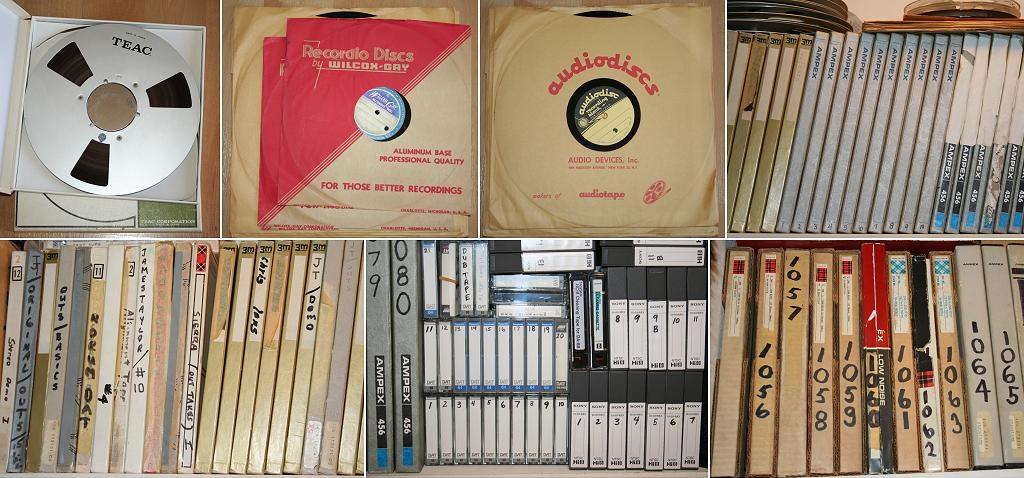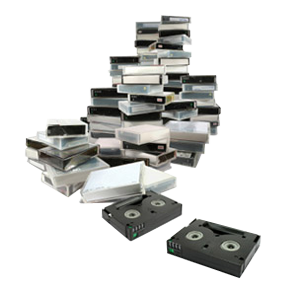Restore Your Precious Legacy Audio with DVD Your Memories

DVD Your Memories is now offering audio restoration services for RAW audio files, as well as for any media type that we currently transfer. We can provide audio cassette restoration, LP Record and vinyl restoration, microcassette restoration and reel to reel audio restoration.
For pricing information, please visit our audio restoration page.
Volume Management
Normalization
This process finds the highest wave peak in a selection, calculates the distance between that peak and the loudest allowable volume without being over-driven, and amplifies the selection by the value of that difference. This is useful when the item in question has a fairly average level of volume throughout yet could stand to be a bit louder.
Maximization
A more complex volume processing technique, the purpose of which is to “compress” the dynamic range of the piece. It allows you to give the piece the desirable amount of gain throughout the selection without overdriving it. The primary difference between this process and normalization is that maximization will bring the perceivable volume level of all elements within the selection to be more equal whereas normalization will maintain the difference in volume between loud and quiet sounds. This process is particularly helpful in situations where the overall volume of a piece is irregular/inconsistent to a degree that is undesirable.
Noise/Hum Reduction
Noise reduction is the process by which one identifies a selection of sonic frequencies within a piece are as “noise” (generally undesirable sound) and reduces them in volume or negates them entirely, leaving the desirable frequencies more or less intact. The problem with this process, though, is that the frequencies which make up “noise” often reside in the same spectrum as the desirable frequencies, particularly those which make up the vocal spectrum or that which we identify as “brightness” in music, and can have an adverse effect on the sonic qualities of the piece. So, only undertake noise reduction with great care for the content. Varying levels of reduction are appropriate for different situations.
For example, a piece of dialogue can stand to have a certain amount of reduction to improve clarity, perhaps not sounding quite as crisp or clear but at least not being drowned by tape hiss. On the other hand, a piece of music can suffer greatly from noise reduction resulting in a “deadening” of the tonal quality. One can counter this effect by another type of processing called harmonic excitation (see below) to restore some of the original frequencies that were removed.
Spectral Editing
Sometimes the semi-automated processes of noise/hum reduction just can’t get a hold of certain sounds and leave behind irritating artifacts. In situations such as this, spectral editing comes into play. In this service, the technician will bring up a spectral display of the selection which shows a visual representation of the audible frequencies. This enables us to visually hunt down and eliminate rogue noises with precision and accuracy.
Pop & Click Reduction
Pops and clicks are a very common sound that we hear when we listen to old vinyl albums. Some attribute the sound to this media as a trademark of their sound properties and even enjoy it while others may find it incredibly irritating or distracting. For the discerning customer seeking maximum clarity we offer the service of reducing and, when possible, removing pops and clicks from a recording. There are two levels to this service, one if which uses an automated process which seeks out quick, sharp wave variations not in line with the rest of the wave and smooths them out.
It is not, however, a perfect system and can be fooled if a pop is longer or not as sharp as others and will therefore remain. In these situations we can go in and manually remove such anomalies – this is level two. While the latter is the only way to guarantee complete elimination of all pops and clicks, it is a very time consuming process and can require a large investment of time and effort on the part of the technician.
Equalization
If the piece we are handling is lacking in certain frequency bands we can use the equalizer or “EQ” to boost those areas. It is not uncommon for a selection of music to have nice crisp highs in the treble frequencies yet disappointing bass response or even vise versa. EQ is the perfect tool for the job. Using this process, we can accurately identify under-expressed frequency bands and give them the gain boost they require to have the same punch as the rest of the piece, hence the name ‘equalization.
Harmonic Excitation
Do you notice that your music sounds lackluster? Does it sound like it was recorded in a cardboard box? This might do the trick. The technique of harmonic excitation is used to give life and vividness to a piece in dire need of it. Every natural sound has harmonics. Such sounds do not ring on only one frequency, they ring out on many frequencies above and including a primary frequency. These additional frequencies are called harmonics. The varying and unique distances between these harmonic frequencies are what give different objects and instruments their tonal qualities.
When you use a harmonic exciter, you are adding harmonic frequencies to a selection that were not there before. The resulting effect is that the piece sounds more real, more alive, almost as though you were in the room during the recording. When used correctly, this process can make a huge difference on any piece of audio, particularly in the case of music.
Stereo Widening
Stereo widening is yet another helpful trick to enhance the realism of a selection. By extracting and expanding the stereo field, the elements within seem to be more accurately placed on a stereo “stage” when normally it would sound as though they were all taking place in the same defined point directly in the center. In the audio industry we refer to the latter effect as “dead center” as it sounds so much less alive. When stereo widening is applied to your audio, you will notice a significant difference in the immersive quality of the final product.









